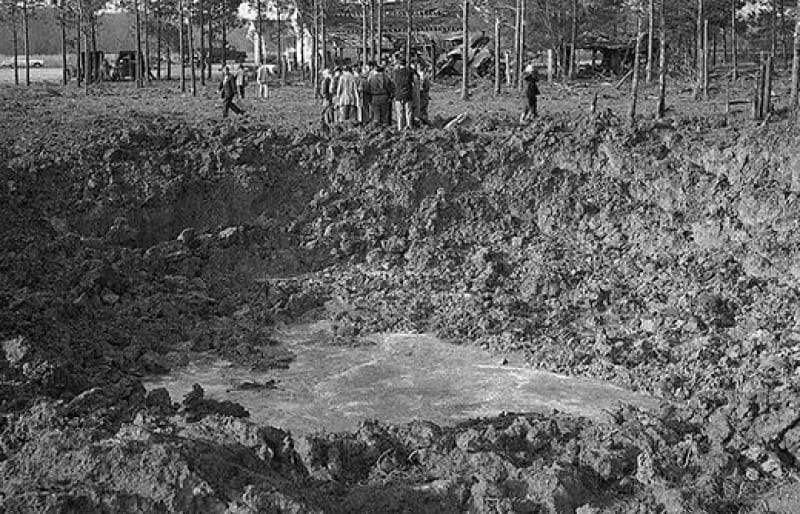An Austrian heiress let a group of strangers donate her fortune

From the New York Times: "After six weekends of deliberating, a group of Austrian citizens decided how to divvy up the riches of the heiress Marlene Engelhorn, who is donating the bulk of her inheritance to charity in an attempt to challenge a system that allowed her to accumulate millions of euros. The Guter Rat für Rückverteilung (“good council for redistribution” in German), a group of 50 residents in Austria advised by experts, chose 77 organizations that would receive money from Ms. Engelhorn’s fortune over the coming years. Ms. Engelhorn, 32, turned to the public to help redistribute her wealth, challenging the lack of inheritance tax in her native Austria. In January, she sent invitations to 10,000 Austrian residents, asking them for help spending 25 million euros (about $26.8 million) of her fortune, which she inherited when her grandmother died. The research group Foresight selected 50 of those residents."
Vikings never wore helmets with horns on them, so why do we always picture them that way?

From Vox: "Popular imagery of Vikings is filled with lots of horned helmets. It's everywhere from football mascots (like the Minnesota Vikings) to far too many New Yorker cartoons. The only problem is that those horned helmets are a complete myth. The main culprit? Costume designer Carl Emil Doepler, who included horned helmets in his gorgeous costume designs for the 1876 performance of Wagner's classic Norse saga, Der Ring des Nibelungen. The opera was so influential that Vikings with horned helmets became a new standard — despite the fact that they were mythical. Germans were fascinated by Vikings, at least in part because they represented a classical origin story free from Greek and Roman baggage. So Doepler and other scholars intertwined German and Norse history in a surprising way: They put stereotypical ancient German headdresses — like horned helmets — on Viking heads."
1815 was the year without a summer thanks to the Mount Tambora volcanic eruption

From Almanac.com: "The largest eruption in recorded history—of Mount Tambora, in what is now Indonesia—caused so much ash in the atmosphere that global temperatures dropped in the summer of 1816, causing unusual cold and food shortages. According to legend, The Old Farmer’s Almanac founder actually predicted snow that summer. Even now, this year is sometimes called “Eighteen Hundred and Nearly Frozen to Death.” At the time, Earth was already experiencing the concluding decades of the Little Ice Age, due to a period of relatively low solar activity from 1790 to 1830 known as the Dalton Minimum. May 1816, in particular, had had the lowest sunspot number (0.1) to date since record-keeping on solar activity had begun. A 13,000-foot-high volcano on the island of Sumbawa, near Bali, was the primary cause of the Year Without a Summer. The eruption happened in April of 1815 and was one of the greatest volcanic eruptions in history. Its toll: perhaps as many as 90,000 lives."
(Editor's note: If you like this newsletter, please share it with someone else. And if you really like it, perhaps you could subscribe, or contribute something via my Patreon. Thanks for being a reader!)
Why do some coins have ridges on their edges?

From Now I Know: "Sir Isaac Newton is most famous as a scholar. His work as a physicist — articulating rules around gravity, force, motion, inertia, etc. — is his claim to fame. But toward the end of his career, he found himself in a less academic job. In 1696, Newton was tapped as the Warden of the Royal Mint, and three years later, was elevated to Master of the Royal Mint. Newton, seeing that the UK had a massive counterfeit coin problem, took the role seriously. The problems began with something called “coin clipping.” For centuries, coins were made of precious metals — gold and silver, often — and therefore, had intrinsic value beyond their stated denominations. You could shave a bit off the edge of a coin, keep the clipped-off piece for yourself, and use the almost-complete coin in a subsequent transaction. From pass to pass, the coin’s change in size and shape would hardly be noticeable. But in time, it became obvious."
The time a nuclear bomb was dropped on a house in a quiet town in South Carolina

From Utterly Interesting: "The incident began with a routine mission. A U.S. Air Force Boeing B-47 Stratojet bomber took off from Hunter Air Force Base in Georgia, destined for an overseas base in Europe. Onboard was an unarmed Mark 6 nuclear bomb, a common payload during the height of the Cold War. The crew, comprising skilled airmen, was experienced in the procedures of handling such dangerous cargo. However, human error and the intricacies of military technology combined to create a disastrous situation. As part of the standard in-flight check, the bombardier was conducting routine checks when he inadvertently pulled the emergency release pin. This critical mistake caused the bomb to drop through the bomb bay doors. Suddenly, the crew was faced with the terrifying realisation that they had just lost a nuclear bomb over American soil. The bomb, thankfully, was not armed with its nuclear core, but it was equipped with conventional high explosives, which detonated upon impact."
In the 18th-century the media in France stoked a werewolf panic

From Public Domain Review: "In the 1760s, nearly three hundred people were killed in a remote region of south-central France called the Gévaudan (today part of the département of Lozère). The killer was thought to be a huge animal, which came to be known simply as “the Beast;” but while the creature’s name remained simple, its reputation soon grew extremely complex. Not only was the Beast of Gévaudan said to prefer attacking women and children (and above all small girls), according to firsthand accounts published in the press it often “removed the victim’s head and drank all her blood,” leaving nothing behind but a pile of bones. Illustrators had a field day representing the Beast, whose appearance was reported to be so monstrous it beggared belief. A printed poster from the time bears the caption: “This Beast is the size of a young Bull, it likes to attack Women and Children, it drinks their Blood, cuts off their Heads, and carries them off.” A reward of twenty-seven hundred livres is promised."
The lowering of the flags ceremony at the India-Pakistan border
The lowering of the flags ceremony at the Attari-Wagah border, conducted daily since 1959 by India's Border Security Force and Pakistan's Rangers, the drill symbolizes both the rivalry and brotherhood cooperation between the two nations.
— Science girl (@gunsnrosesgirl3) June 26, 2024
pic.twitter.com/onmPqijOmq
Acknowledgements: I find a lot of these links myself, but I also get some from other newsletters that I rely on as "serendipity engines," such as The Morning News from Rosecrans Baldwin and Andrew Womack, Jodi Ettenberg's Curious About Everything, Dan Lewis's Now I Know, Robert Cottrell and Caroline Crampton's The Browser, Clive Thompson's Linkfest, Noah Brier and Colin Nagy's Why Is This Interesting, Maria Popova's The Marginalian, Sheehan Quirke AKA The Cultural Tutor, the Smithsonian magazine, and JSTOR Daily. If you come across something interesting that you think should be included here, please feel free to email me at mathew @ mathewingram dot com



